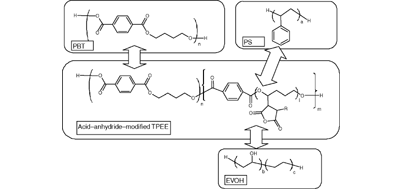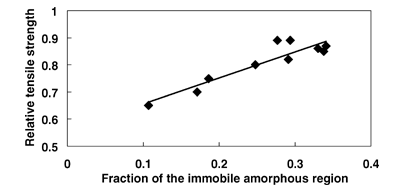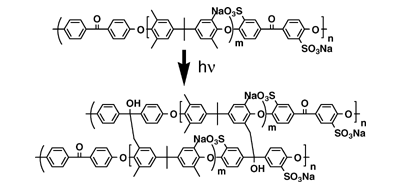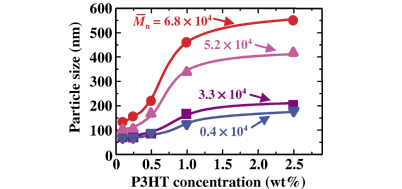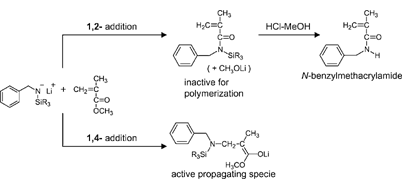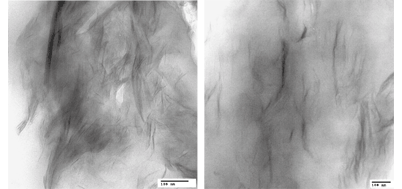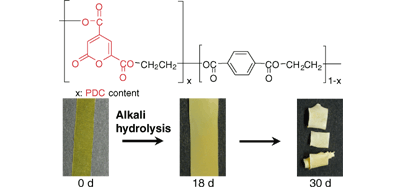[Regular Article] Web Release Date: November 27, 2007
|
68-75 Polyesters of 2-Pyrone-4,6-Dicarboxylic Acid (PDC) Obtained from a Metabolic Intermediate of Lignin
T. Michinobu, M. Hishida, M. Sato, Y. Katayama, E. Masai, M. Nakamura, Y. Otsuka, S. Ohara, and K. Shigehara
[Full Text PDF(J-STAGE)]
|
|
|
Polyesters of 2-pyrone-4,6-dicarboxylic acid (PDC), a chemically stable metabolic intermediate of lignin, were for the first time prepared by polycondensation with 1,2-ethanediol, 1,3-propanediol, and bis(2-hydroxyethyl) terephthalate. The polyesters were insoluble in common organic solvents when the number-average molecular weight exceeded about 4× 103. The strain-stress measurements indicated the high Yong′s modulus of 250 MPa. The hydrolysis tests revealed that the degradability of the polyesters is dependent on the PDC content in the polymers.
| |
